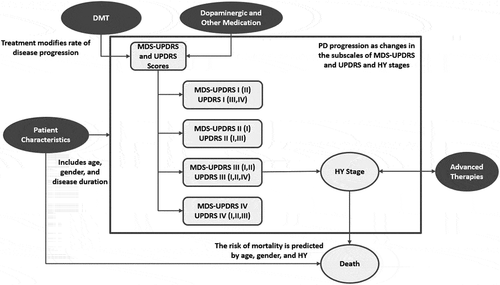Figures & data
Figure 1. Model influence diagram

Table 1. Model inputs and sources
Table 2. Simulation base case results for a hypothetical DMT added to standard of care vs. standard of care over a lifetime horizon
Figure 2. Simulation of movement disorder society unified Parkinson’s disease rating scale scores over time for a newly diagnosed cohort: comparison of simulated with observed outcomes

Figure 3. Deterministic sensitivity analysis results

